Le 9 novembre 2024, une rare collection d’instruments de style médiéval et renaissance, ayant appartenu à John Cochran, sera présentée à Vichy Enchères. Cet ensemble témoigne de l’amour de John Cochran pour la musique ancienne et de son engagement pour faire vivre et connaître la musique de ces époques. La collection est constituée d’instruments raffinés réalisés par des luthiers de renommée mondiale, à l’instar de David Rubio, Brian Cohen ou César Vera – tous spécialistes des méthodes de fabrication traditionnelles. Ces instruments offrent une rare occasion aux passionnés de musique ancienne d’acquérir des modèles de grande qualité, adaptés à la pratique de la musique historiquement informée.
John Cochran, né à New York en 1941, est l’incarnation contemporaine de l’homme de la Renaissance, à la fois artiste et humaniste. Il fut initié à la musique par l’incontournable guitariste Andrés Segovia, qui lui communiqua sa passion pour l’instrument.
Musicien pluridisciplinaire, Cochran maîtrisait aussi bien la guitare, la clarinette et le luth. Sa fascination pour la musique médiévale et renaissance l’amena à explorer et interpréter ces répertoires, mêlant son amour pour l’histoire et la musique, le chant et la pratique instrumentale.
Après des études à l’Université William and Mary en Virginie, où il perfectionna sa connaissance et sa pratique de la musique historique, John Cochran se tourna vers une carrière de juriste en droit international. Son amour pour la France, berceau de la musique occidentale, l’amena à s’y installer au début des années 1970.
Amoureux de la beauté et des formes des instruments anciens, il constitua une collection remarquable de modèles symbolisant l’âge d’or de la musique médiévale et renaissance.
Parallèlement à sa passion pour la musique, John Cochran se consacra à la viticulture. En 1989, il devint vigneron au Château Falfas, un domaine viticole prestigieux situé sur la rive droite de la Gironde et reconnu comme pionnier de la biodynamie à Bordeaux. Avec son épouse Véronique, il perpétua la tradition viticole du domaine tout en y apportant une touche personnelle. Il ne mit cependant jamais de côté sa passion pour la musique et participa notamment à la création du festival Bourg Arts et Vins en 1994-1995.
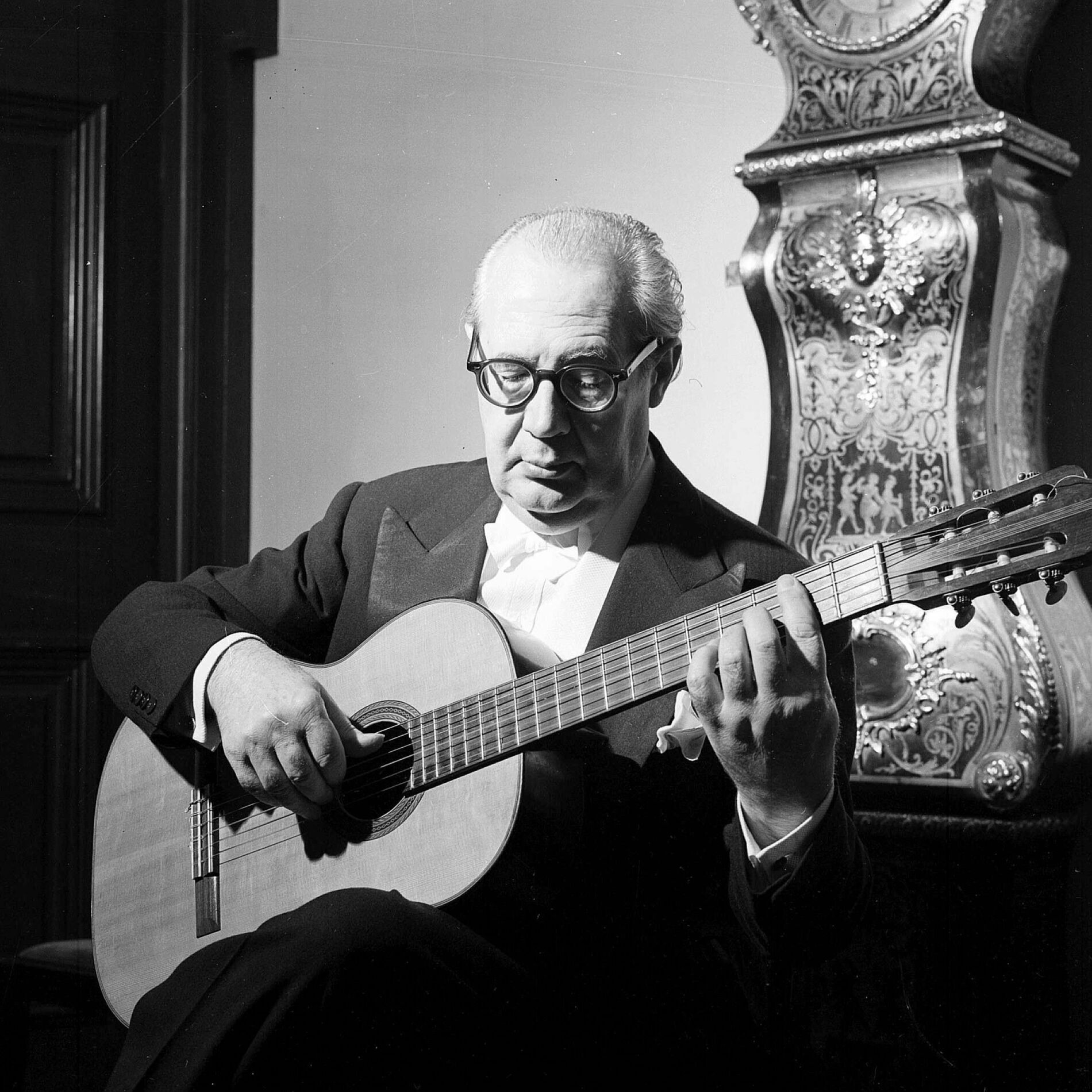
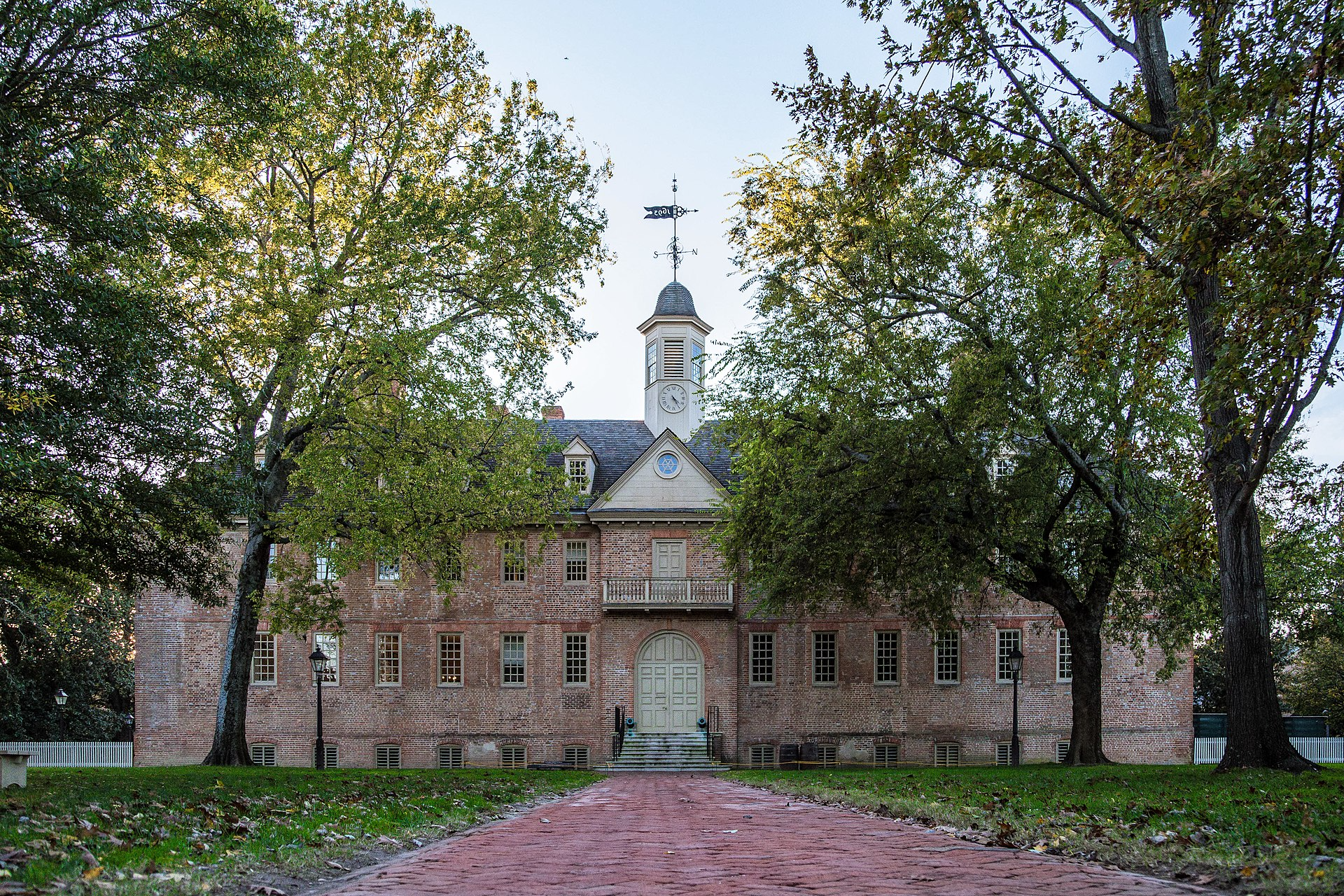
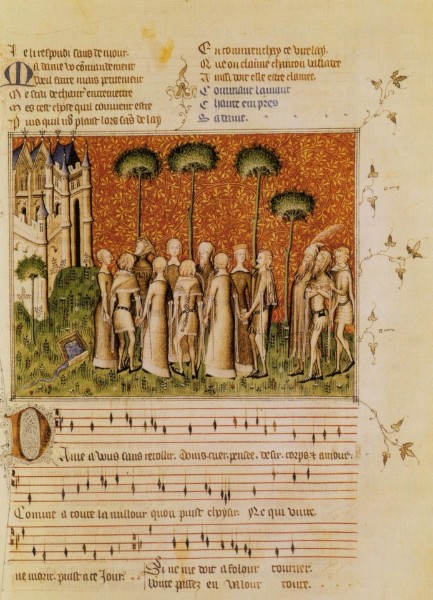
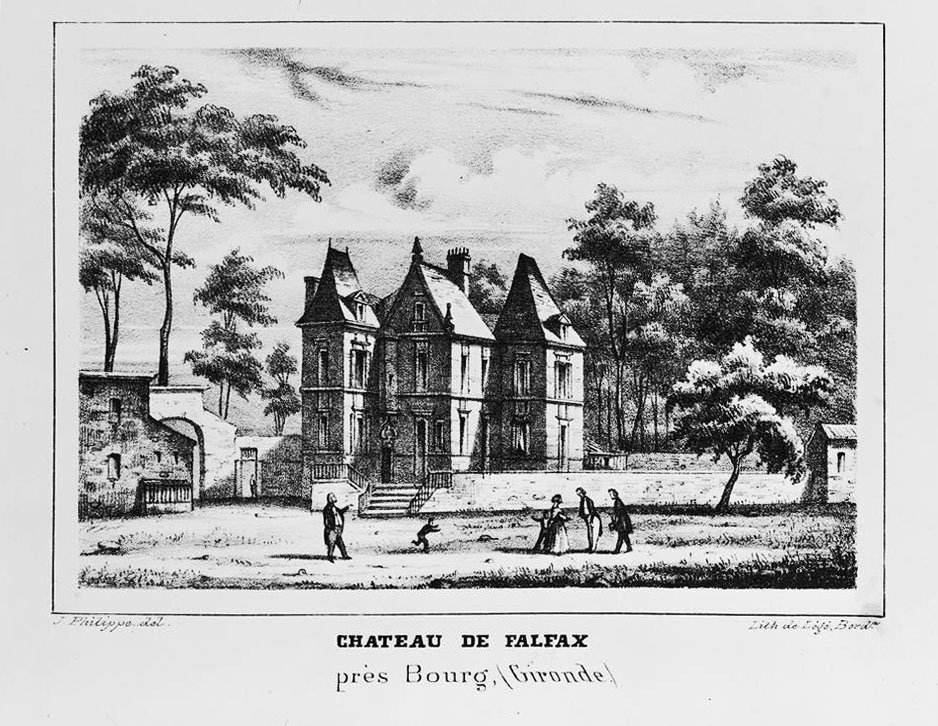
La collection d’instruments de musique de John Cochran est une célébration de l’époque fondatrice de la musique occidentale, qui vit l’éclosion de la monodie au Moyen-Âge et l’apogée de la polyphonie à la Renaissance.
Passionné par cette histoire et par l’interprétation historiquement informée de la musique ancienne, John Cochran joua sur des instruments d’époque ou des copies fidèles, cherchant à recréer le plus possible les conditions dans lesquelles les œuvres musicales étaient jouées à l’époque de leur composition. Il s’entoura de luthiers de renommée internationale, spécialisés dans la facture d’instruments anciens, tels que le facteur de clavecins Anthony Sidey ou Brian Cohen. Parmi les instruments de la collection de John Cochran se trouvent naturellement beaucoup de luths – la chanson pour luth étant l’un des genres les plus répandus à la Renaissance -, une guitare baroque ou encore une rare « viuela con vruida ».
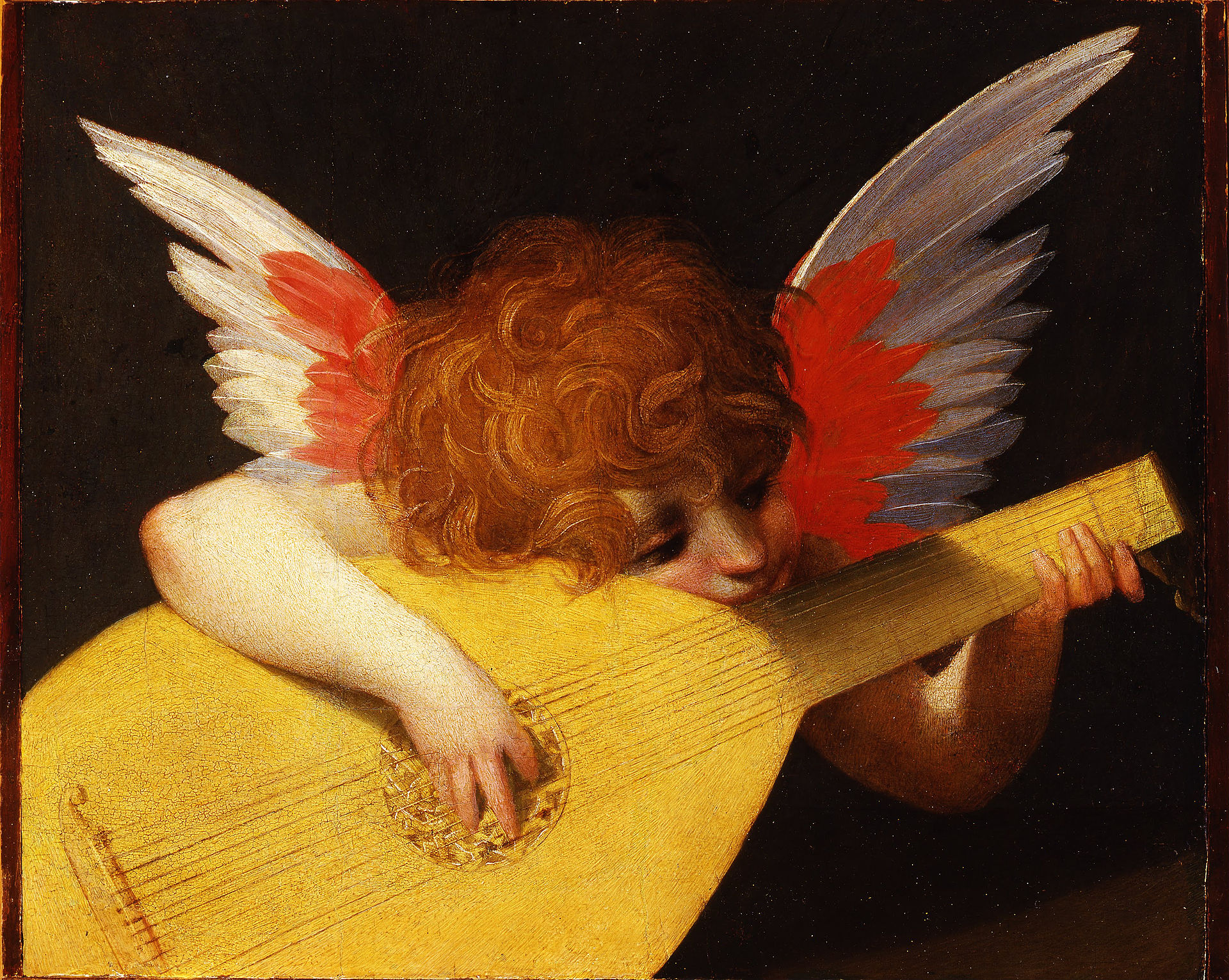
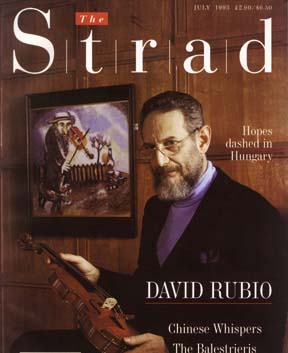
Le luth occupe une place prépondérante dans l’histoire de la musique occidentale. Ses origines remontent à l’Antiquité, où des instruments similaires étaient déjà utilisés dans les cultures mésopotamiennes et égyptiennes. Le luth tel que nous le connaissons a cependant pris sa forme définitive au Moyen-Âge, après son introduction en Europe par les Maures lors de la conquête de l’Espagne au VIIIe siècle. Il devint rapidement populaire en Europe, notamment en raison de sa capacité à accompagner la voix et d’autres instruments. Le luth, très apprécié dès le Moyen Âge, est devenu un symbole de la musique occidentale, comparable à la lyre antique. Sa sonorité délicate en fit l’instrument idéal des représentations célestes, notamment picturales, où il est souvent joué par des anges.
À l’origine, les cordes étaient pincées avec un plectre, produisant une mélodie monodique. Cependant, vers la fin du XVe siècle, les musiciens commencèrent à utiliser leurs doigts pour jouer, ce qui favorisa le développement de la polyphonie instrumentale à la Renaissance. À cette époque, le luth est un instrument aristocratique, symbole de raffinement, utilisé dans les cours européennes.
Comme en atteste cet aperçu de la collection de John Cochran, l’instrument était l’un de ses favoris. Ces modèles ont été réalisés par David Rubio, un luthier anglais qui s’est particulièrement illustré dans la fabrication d’instruments anciens tels que les luths, théorbes, vihuelas et clavecins. Son approche de la musique rejoignait celle de John Cochran, puisque son travail visait à recréer fidèlement les sonorités et l’esthétique des instruments d’époque, en s’inspirant des maîtres anciens.
Durant 40 ans de carrière, David Rubio a mené des recherches approfondies sur les techniques historiques de fabrication et a collaboré avec des scientifiques afin d’améliorer la sonorité de ses instruments. Il a ainsi contribué à perpétuer des techniques de lutherie traditionnelles et un savoir-faire menacé de disparaître. Ses instruments, appréciés par des musiciens renommés tels que Julian Bream, sont devenus des références dans le domaine de la musique ancienne. En hommage à son influence, un quatuor à cordes a été nommé Quatuor Rubio.
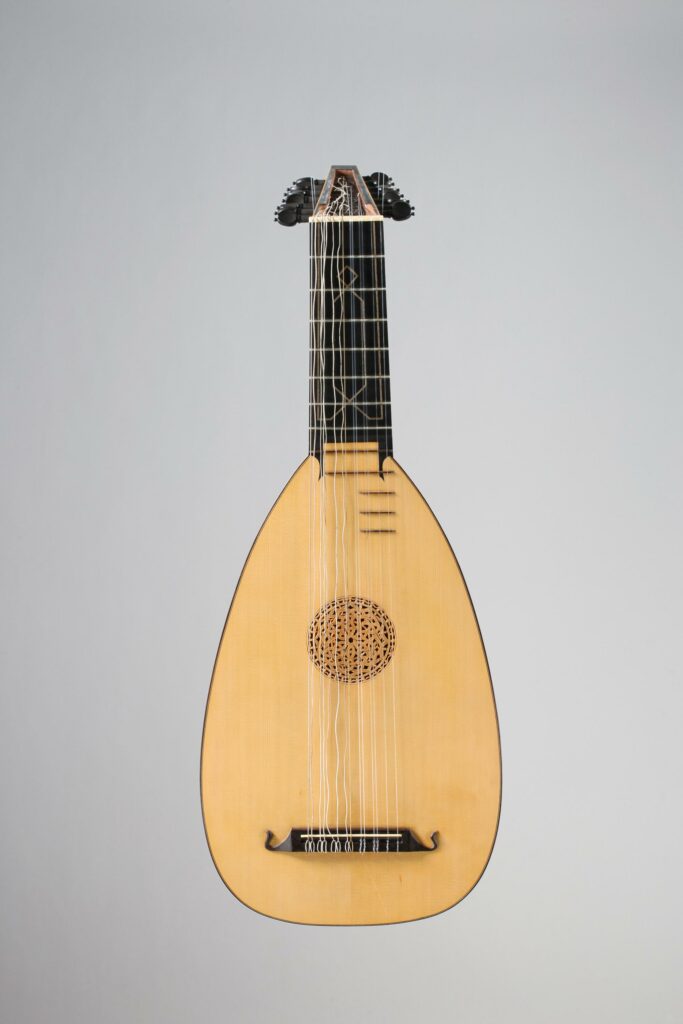
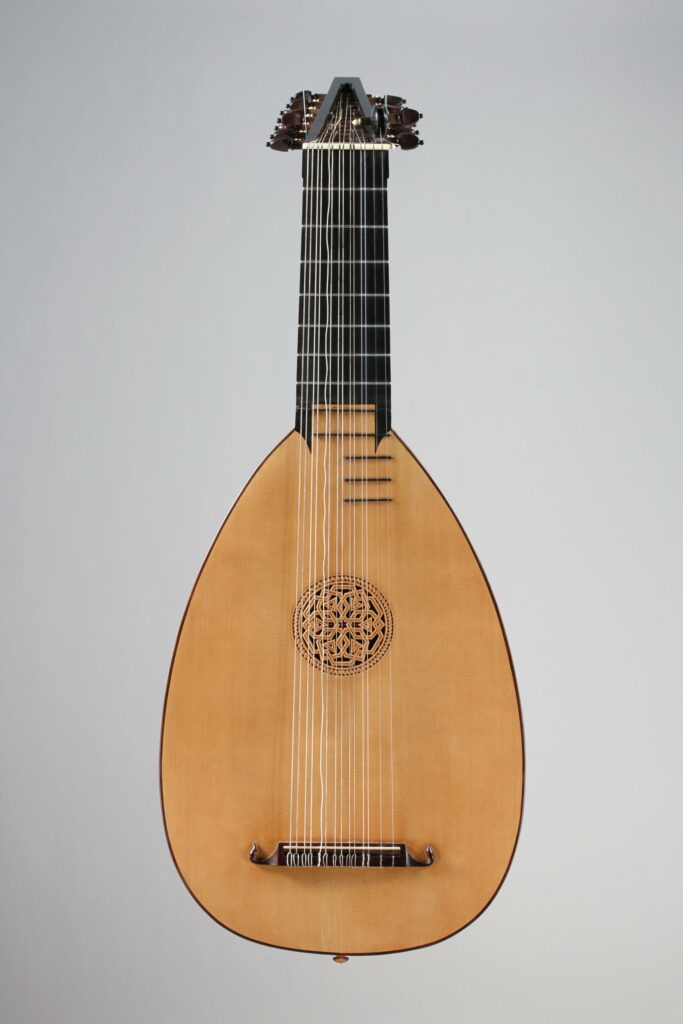
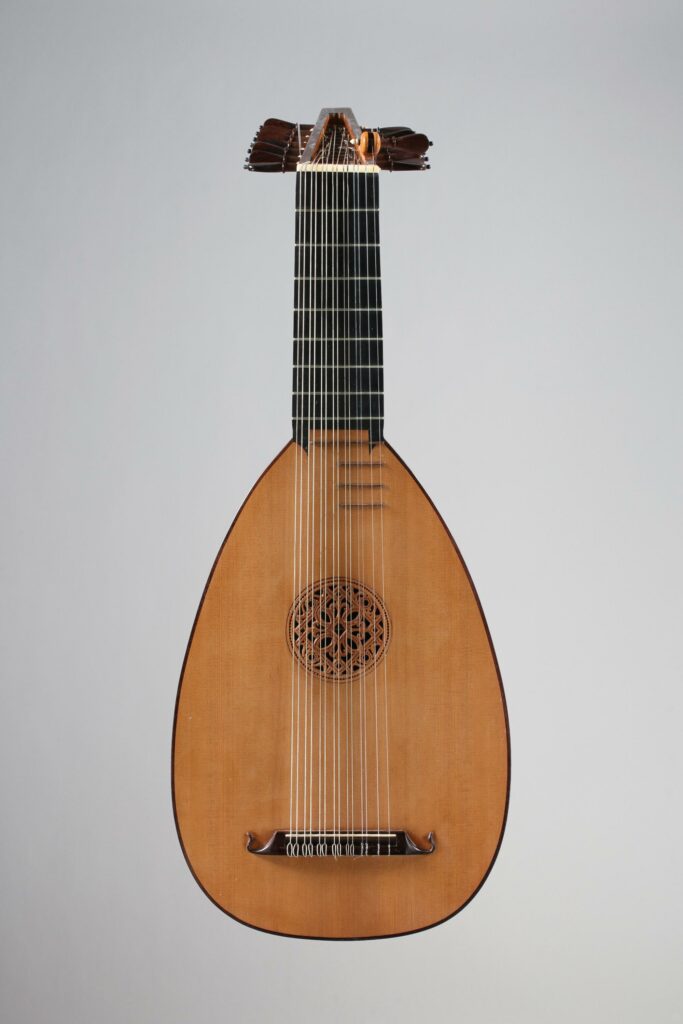
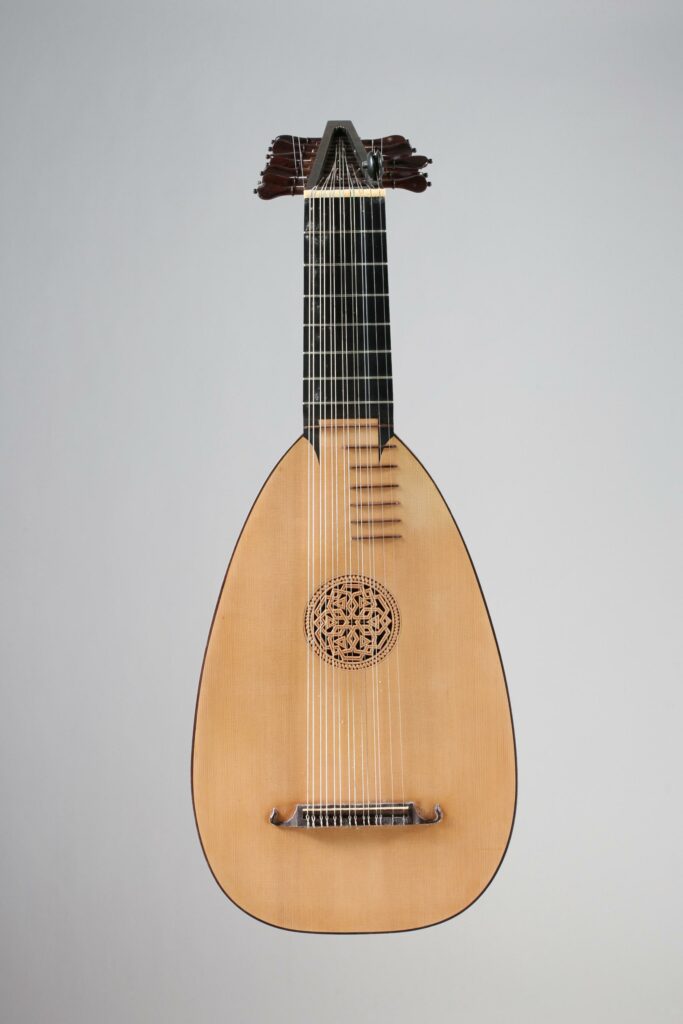
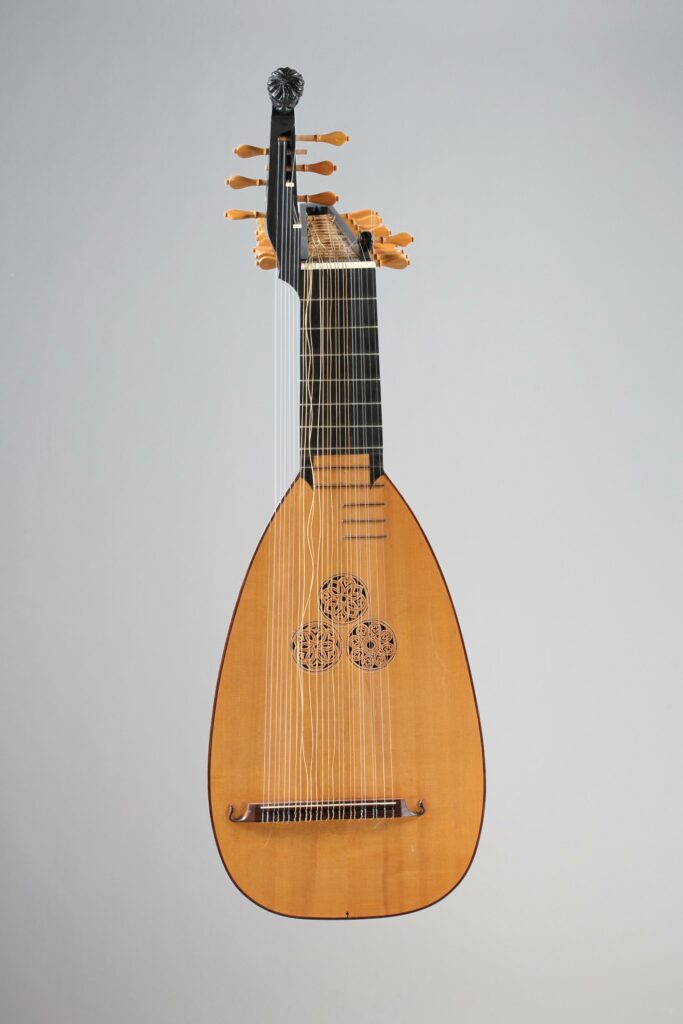
Le terme « viuela con vruida » fait référence à une variation de la vihuela, un instrument de la Renaissance espagnole similaire à la guitare, mais accordé comme un luth. Le terme « vruida » désigne quant à lui un motif ornemental en bois ou en os placé au centre de la table d’harmonie, qui contribue à la beauté visuelle et à la qualité sonore de l’instrument. La vihuela était l’instrument favori des nobles espagnols et était souvent utilisée pour accompagner des chansons ou jouer des pièces instrumentales complexes.
L’instrument de la collection Cochran a été réalisé par César Vera, un luthier espagnol basé à Valencia del Ventoso, reconnu pour son artisanat minutieux et sa maîtrise du travail du bois. Spécialisé principalement dans la construction de guitares historiques, il réalise des instruments de style ancien, tels que ce modèle, ou encore des violes da braccio. Le luthier est particulièrement attentif aux techniques traditionnelles et aux matériaux utilisés, cherchant à reproduire la sonorité douce et authentique des instruments d’époque.
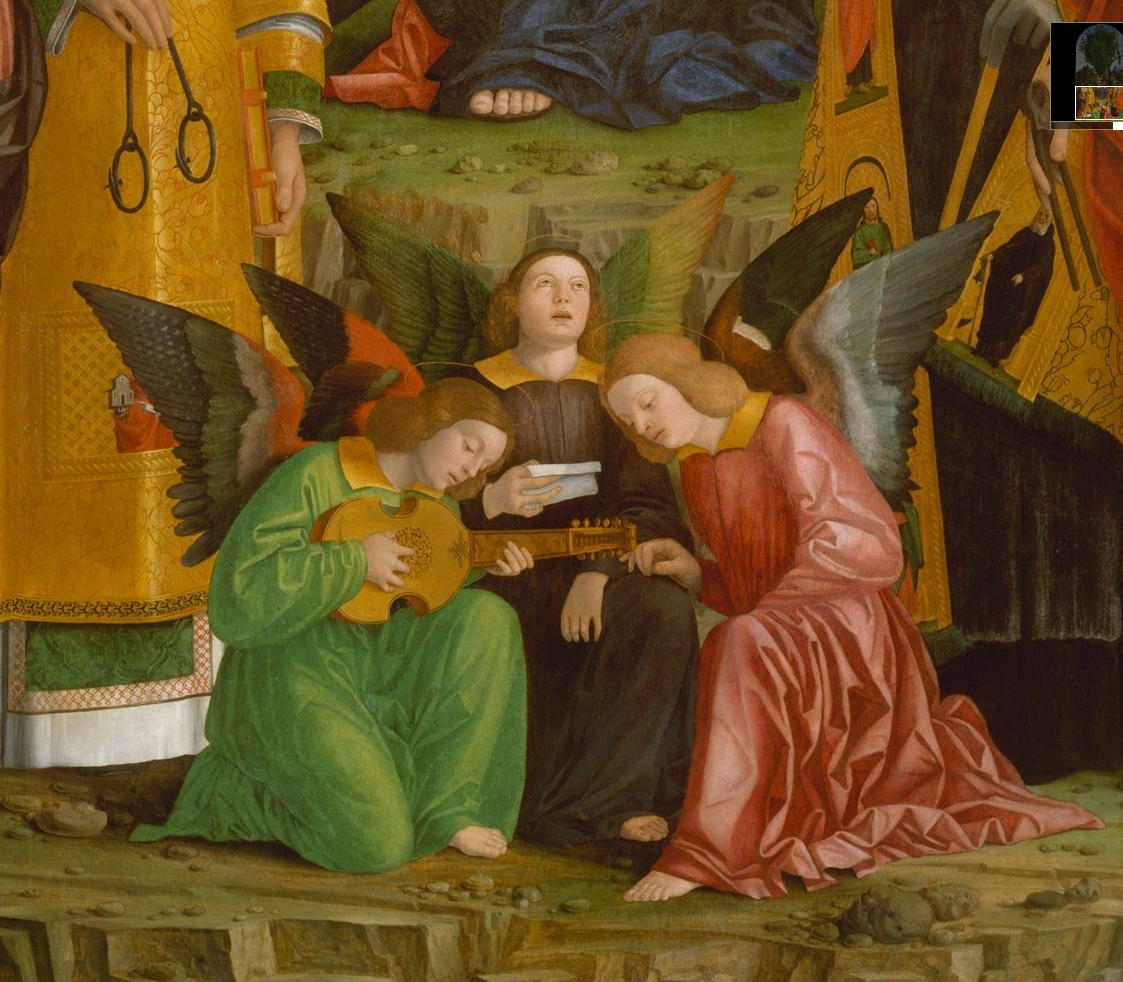
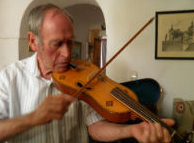
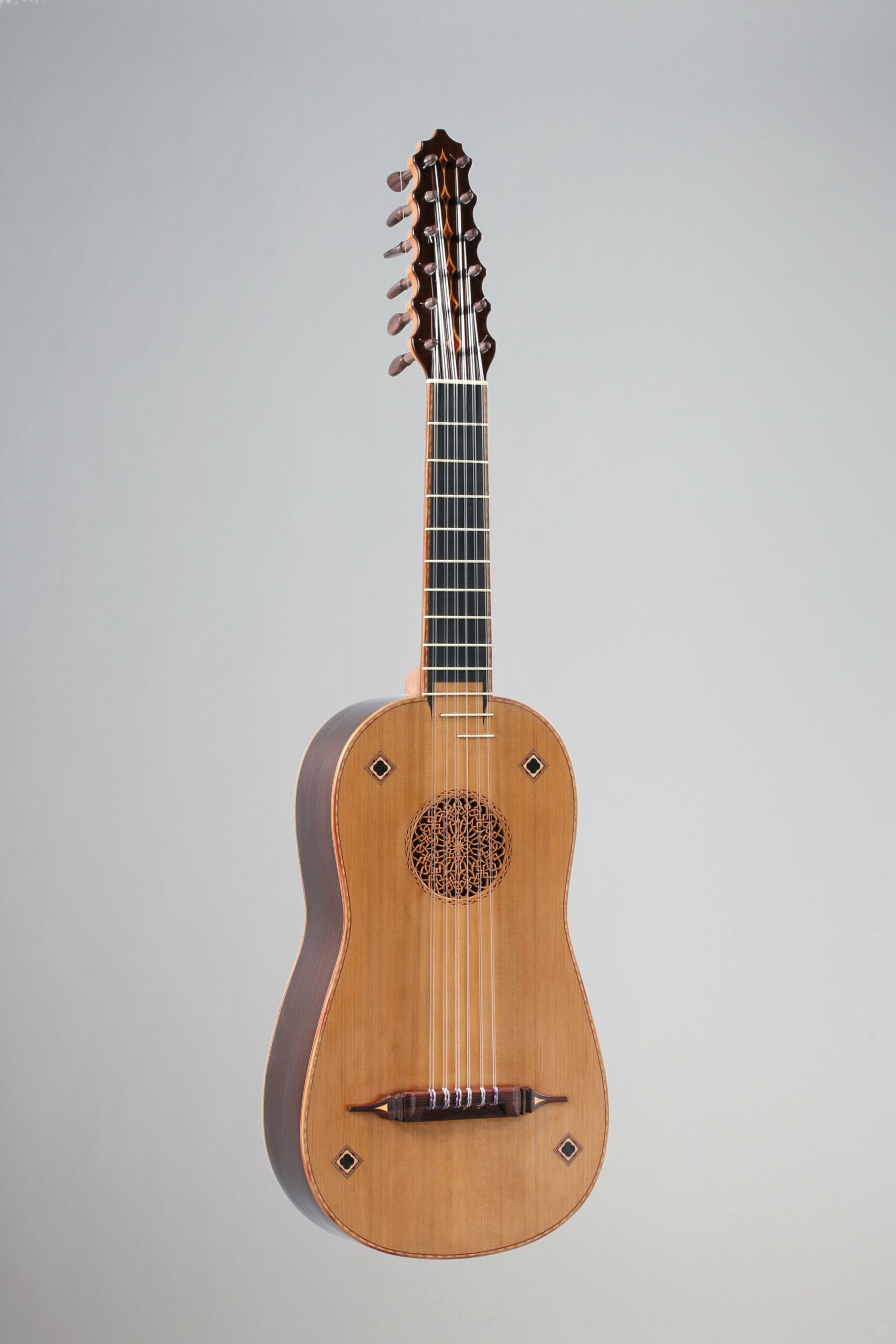
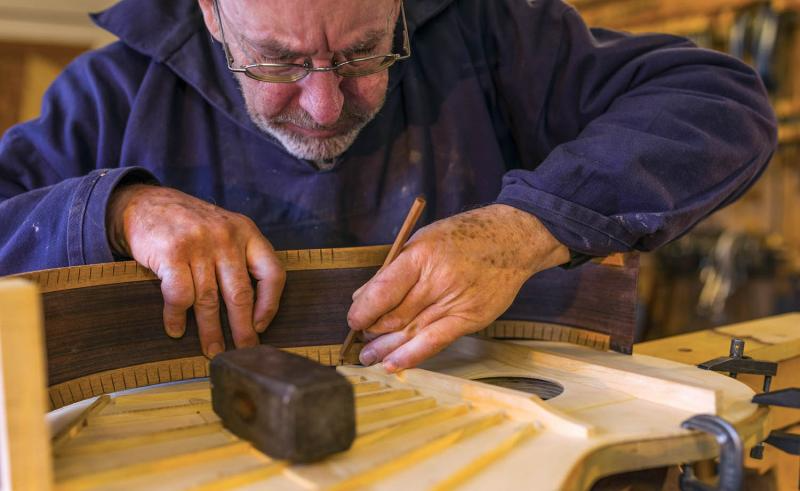
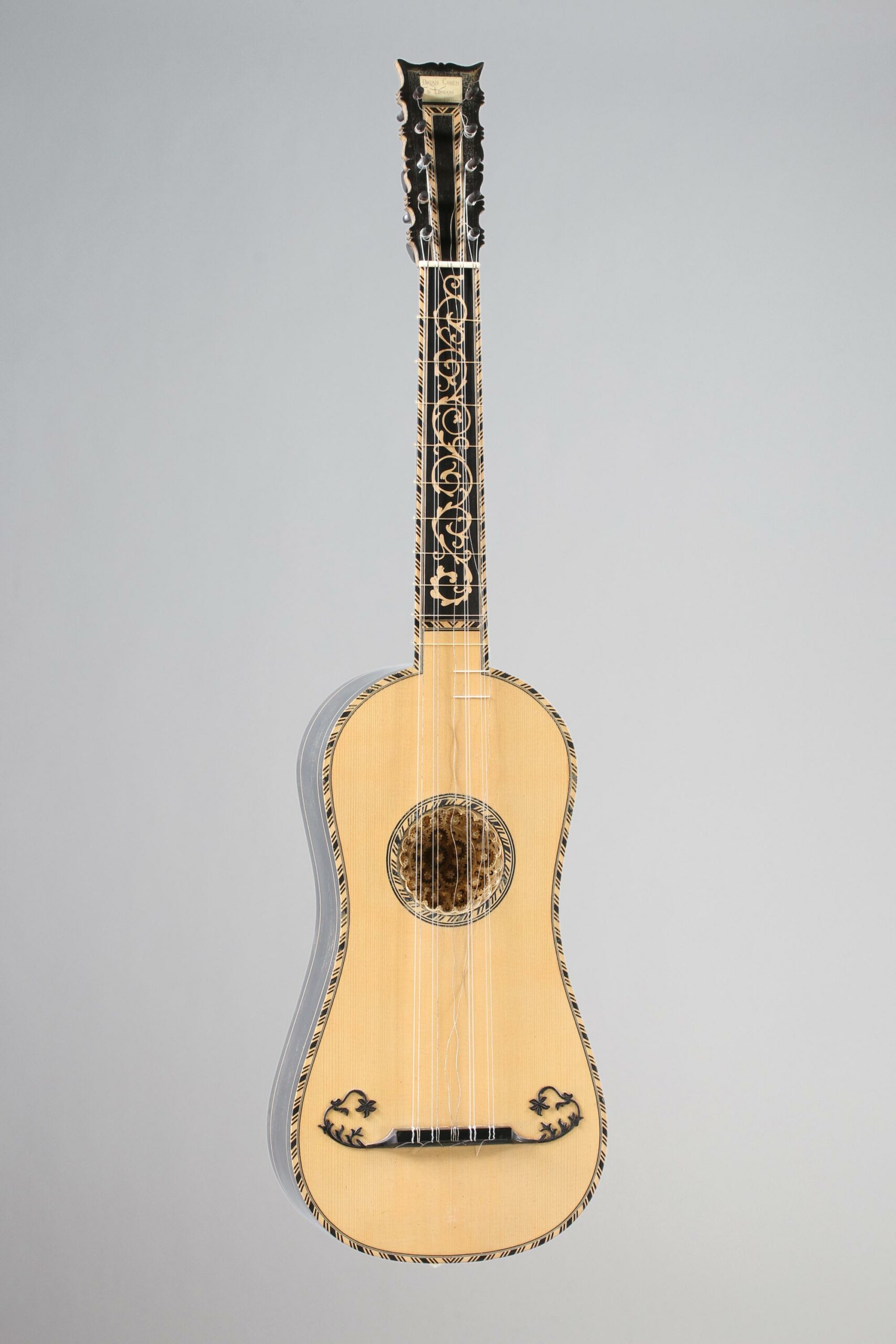
La collection comprend également une guitare de modèle baroque réalisée par le luthier anglais Brian Cohen.
De renommée internationale, Brian Cohen fabrique principalement des guitares de concert inspirées du modèle espagnol traditionnel ou encore de Torres. Chaque guitare est créée comme une pièce unique, sans moule standardisé et en tenant compte du répertoire musical qui lui est destiné.
Brian Cohen était un ami de John Cochran, avec qui il partageait la même passion de la musique ancienne.
Pour la construction de ses instruments, Brian Cohen utilise des méthodes entièrement traditionnelles, employant des outils manuels et même des machines à pédale du XIXe siècle, dont certaines ayant appartenu à David Rubio. Son travail, conjuguant artisanat et minutie, exploite pleinement le potentiel du bois, garantissant des instruments de haute qualité technique et sonore, capables de jouer des musiques anciennes. Ses instruments sont, à ce titre, prisés par les musiciens spécialisés dans la musique historiquement informée.

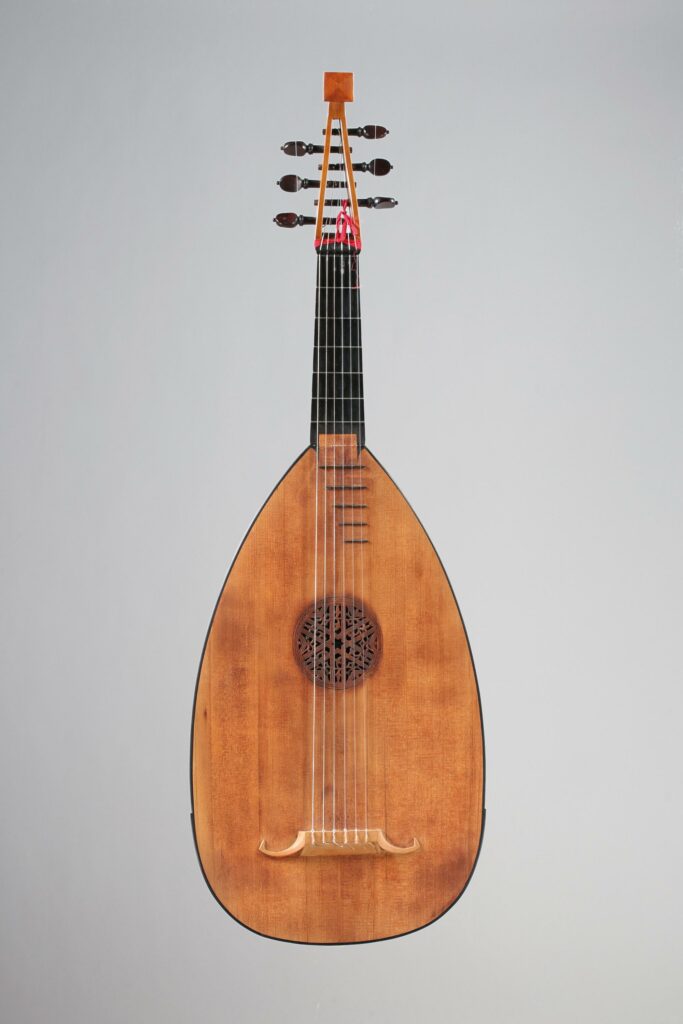
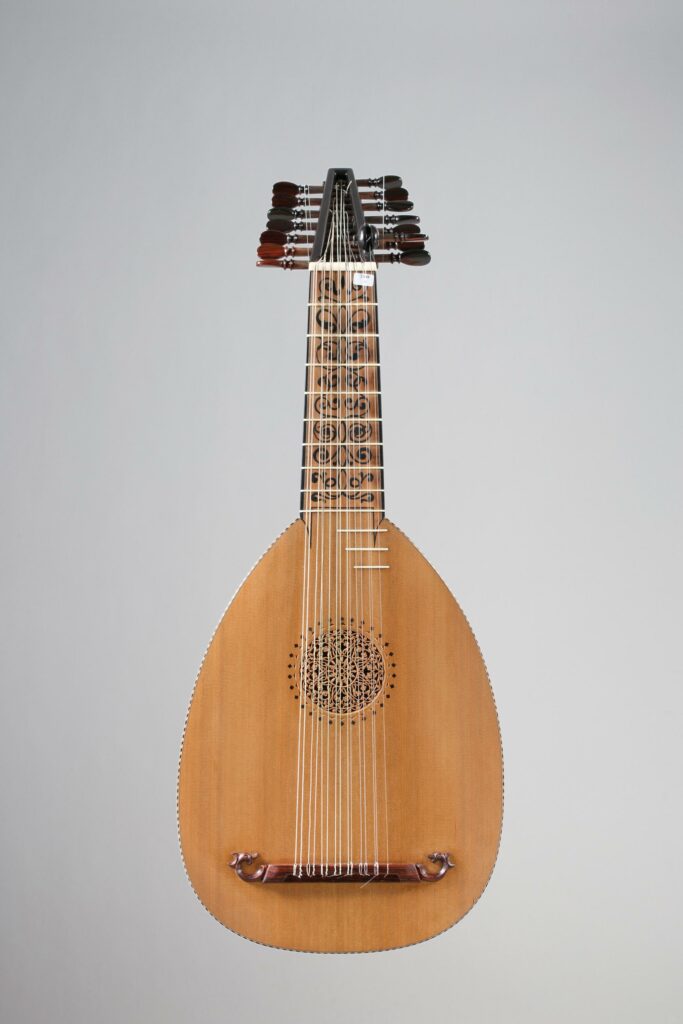
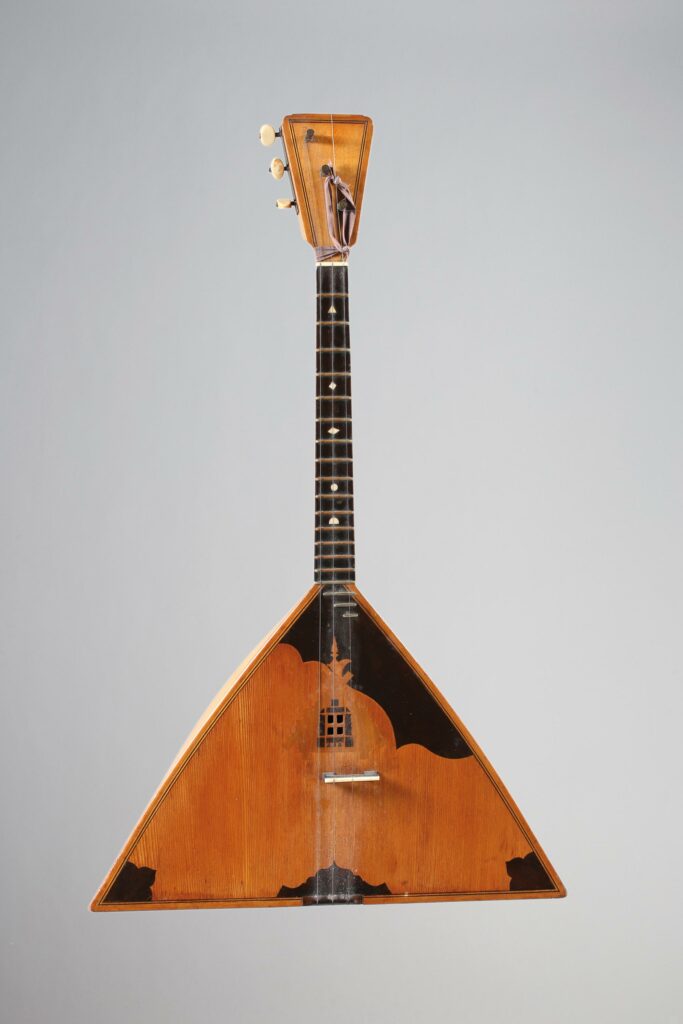
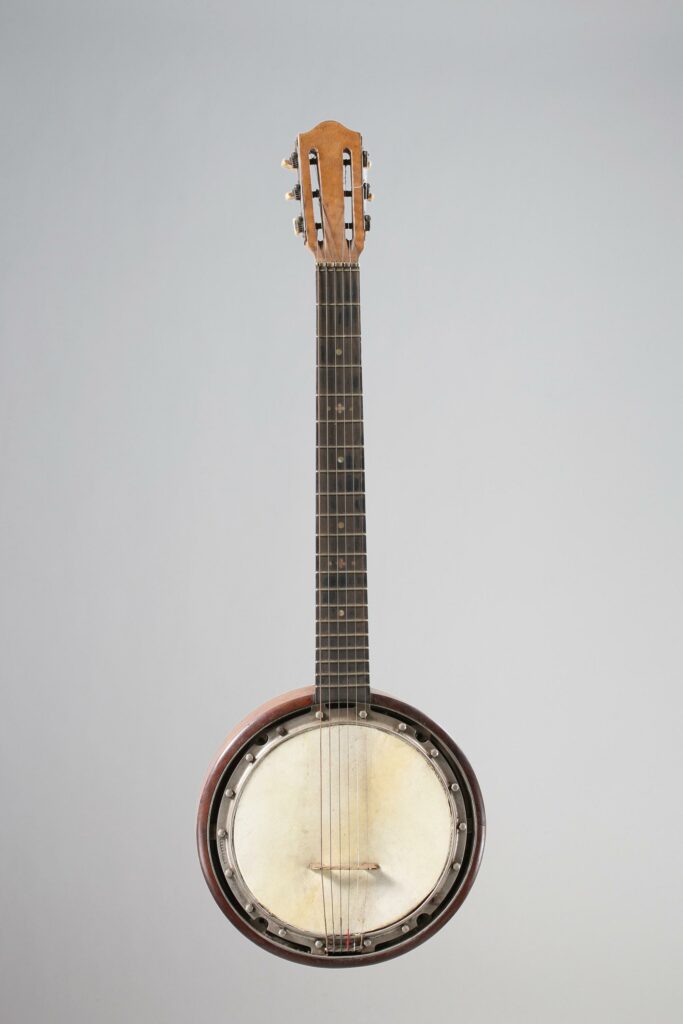
John Cochran a su concilier ses passions pour la musique et la viticulture, laissant derrière lui un héritage riche et varié. Sa collection d’instruments de musique, d’intérêt historique et artistique, est un rare exemple contemporain de modèles réalisés d’après l’ancien, capables d’interpréter le répertoire médiéval et renaissant. Fabriqués par des luthiers de référence, spécialisés dans ce domaine, tels que Brian Cohen, David Rubio, Hermann Hauser ou César Vera, ces instruments sont une fenêtre ouverte sur le passé. Suivant la volonté de la famille Cochran de les faire vivre, ils seront dispersés à Vichy Enchères le 9 novembre 2024.
On 9 November 2024, a rare collection of medieval and renaissance instruments, assembled by John Cochran, will be auctioned at Vichy Enchères. This collection is a testament to John Cochran’s love of early music and his efforts to keeping the music of these periods alive and known. The collection consists of fine instruments made by world-famous makers, such as David Rubio, Brian Cohen and César Vera, who specialise in traditional making techniques. These instruments provide a rare opportunity for early music enthusiasts to acquire fine examples of great quality and suitable for period performance.
John Cochran was born in New York City in 1941 and is a true contemporary incarnation of the Renaissance man, both from an artistic and humanistic perspective. He was introduced to music by the legendary guitarist Andrés Segovia, who passed on his passion for the instrument to him.
Cochran was a multi-instrumentalist who mastered the guitar, clarinet and lute. His fascination with medieval and renaissance music led him to explore and perform these repertoires; by doing so he combined his love of history, music, singing and instrumental practice.
After studying at William and Mary University in Virginia, where he perfected his knowledge and performance of early music, John Cochran turned to a career in international law. His love for France, the cradle of Western music, led him to settle there in the early 1970s.
He was also fascinated by the beauty and form of ancient instruments, and built up a remarkable collection representative of the golden age of medieval and renaissance music.
Alongside his passion for music, John Cochran devoted himself to wine making. In 1989, he became winemaker at Château Falfas, a prestigious wine estate located on the right bank of the Gironde and famous for pioneering organic wine in Bordeaux. With his wife Véronique, he carried on the winemaking tradition of the estate while adding his personal touch. However, his passion for music never died and he was in particular involved in the organisation of the Bourg Arts et Vins festival in 1994-1995.




The John Cochran collection of musical instruments is a celebration of the formative years of Western music, which saw the advent of the single melodic line in the Middle Ages and the rise of polyphony in the Renaissance.
John Cochran was passionate about this history and period performance of early music, and he played on historical instruments or faithful reproduction, seeking to recreate as much as possible the conditions in which musical works were performed at the time of their composition. He called upon makers of international renown, specialising in the making of period instruments, such as the harpsichord maker Anthony Sidey or Brian Cohen. The instruments in John Cochran’s collection include, of course, many lutes – the lute song being one of the most widespread genres during the Renaissance, as well as a baroque guitar and a rare “viuela con vruida”.


The lute occupies a prominent place in the history of Western music. Its origins date back to Antiquity, where similar instruments were already used in Mesopotamian and Egyptian cultures. However, the lute as we know it took its definitive form in the Middle Ages, after its introduction in Europe by the Moors during the conquest of Spain in the 8th century. It quickly became popular in Europe, particularly because of its ability to accompany the voice and other instruments. This growing popularity in the Middle Ages and beyond made of the lute a symbol of Western music, comparable to the ancient lyre. Its delicate sound made it the ideal instrument to feature in celestial representations, especially in paintings, where it is often played by angels.
Originally, the strings were plucked with a plectrum, producing a single melodic line. However, towards the end of the 15th century, musicians began to use their fingers to play it, which contributed to the development of instrumental polyphony during the Renaissance. At that time, the lute was an instrument reserved for the aristocratic class, a symbol of refinement, played in European courts.
A brief look at John Cochran’s collection shows that the lute was one of his favourite instruments. The lutes in his collection were made by David Rubio, an English maker who was particularly sought after for his period instruments, including lutes, theorbos, vihuelas and harpsichords. His approach to music was similar to that of John Cochran, as his work aimed to faithfully recreate the sound and appearance of historical instruments, by drawing inspiration from the old masters.
During his 40-year career, David Rubio conducted extensive research into historical making techniques and collaborated with scientists to improve the sound of his instruments. In doing so, he kept alive traditional instrument making techniques and craftsmanship that were in danger of disappearing. His instruments, which are appreciated by renowned musicians such as Julian Bream, have become works of reference in the field of early music. The string quartet Quatuor Rubio was named after him, in recognition of his influential contribution.





The term “viuela con vruida” refers to a variation of the vihuela, a Spanish Renaissance instrument similar to the guitar, but tuned like a lute. The term “vruida” refers to an ornamental pattern of wood or bone placed in the centre of the front, which contributes to the visual beauty and sound quality of the instrument. The vihuela was a popular instrument amongst Spanish nobles and was often used to accompany songs or play complex instrumental pieces.
The instrument in the Cochran collection was made by César Vera, a Spanish maker based in Valencia del Ventoso who was known for his meticulous craftsmanship and excellent woodworking skills. He specialized in the construction of period guitars, reproducing old instrument models, such as this one, as well as violas da braccio. The maker employed traditional techniques and paid particular attention to the materials he used in seeking to faithfully reproduce the soft sound of historical instruments.





The collection also includes a baroque guitar made by the English maker Brian Cohen.
The internationally renowned Brian Cohen mainly makes concert guitars inspired by the traditional Spanish models or by Torres. Each guitar is created as a unique piece, not by using a standard mould, and takes into account the musical repertoire for which it is intended.
Brian Cohen was a friend of John Cochran, with whom he shared the same passion for early music.
For the construction of his instruments, Brian Cohen follows entirely traditional methods, using hand tools and even 19th century pedal machines, some of which belonged to David Rubio. His work, which is characterized by meticulous handywork, makes full use of the potential of the wood, ensuring his instruments are of the highest quality, both technically and from a sound perspective, and capable of playing early music. His instruments are, therefore, sought after by musicians specializing in period performance.





John Cochran was able to pursue his passions for both music and wine making, leaving behind a rich and varied legacy. His collection of musical instruments, of historical and artistic interest, is unique and consists of contemporary instruments made after the old, capable of interpreting the medieval and Renaissance repertoire. Made by leading makers specializing in period instruments, such as Brian Cohen, David Rubio, Hermann Hauser and César Vera, these instruments are a window into the past. Following the Cochran family’s wishes to keep them alive, they will be auctioned at Vichy Enchères on 9 November 2024.